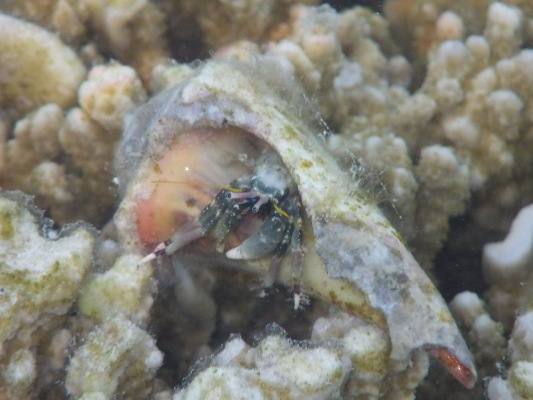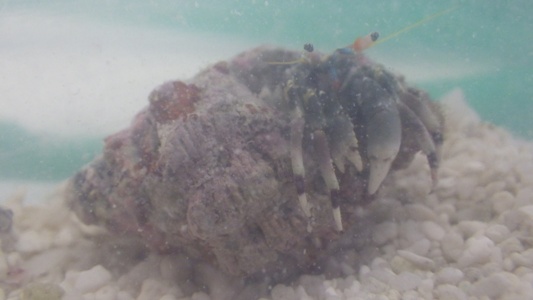Conservation & Threats
Although Calcinus latens as a species is not particularly considered to be at risk, there are potential threats to its coral reef habitat and to the hermit crabs in general.
Threat to the coral reef habitat
In many parts of the world, coral reefs are under the environmental pressures. In the Great Barrier Reef region, the major threats to the reef system are climate change, catchment runoff, and coastal development (Great Barrier Reef Marine Park Authority 2009). Climate change involves the increased water temperature,sea level rise, and ocean acidification, which are considered to be the cause of coral breaching (Great Barrier Reef Marine Park Authority 2009). Besides,the increased amount of sediments, nutrients and pesticides can damage the health of corals, and it is enhanced by the further coastal development for industries and recreational use (Great Barrier Reef Marine Park Authority 2009). Pollutants from runoff are concerned particularly with regard to the bioaccumulation in the predators in the higher level within the ecosystem. Therefore,the health of benthic prey organisms including hermit crabs is important for the system of the region as a whole.

|
|
The important habitat for C. latens, coral reef is under the threats.
(Photo taken in Heron Island, September 2013)
|
Threat to hermit crabs
There are evidences suggesting the impact of ocean acidification to the behavior of hermit crabs. In the experiment by De la Haye et al. (2011), Pagurus bernhardus inhibited locomotion and antennular flicking(olfactory behavior). The crabs were less likely to change shells, and even when they did, their locomotion was slow; if it happens in the natural environment, the crab wastes time and energy and are more vulnerable to predation (Haye et al 2011). On the other hand, there is potential anthropogenic pressure to certain hermit crabs which are attractive as ornamental species in aquarium(Calado & Dinis 2008; Calado et al. 2008). Colorful Calcinus species are one of the preferred groups of hermit crabs and subject to heavy trades from the tropical waters to developed countries (Calado et al. 2003). However, the impact of such exploitation to the local population is largely unknown, thus further researches in the population dynamics of the hermit crabs are desired (Calado & Dinis 2008).

|
|
Calcinus species are traded heavily because they can be a pretty addition to theaquarium,
(Photo taken in Heron Island, September 2013)
|
|